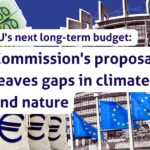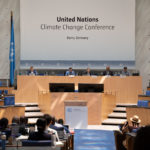What’s the situation?
Just short of one year since it was first launched, the European External Investment Plan is in full flow among the usual suspects of the EU machine. To recap, the Plan was initiated as part of the EU’s response to patterns such as migration (and its causes), and longer term sustainable development in third countries. The geographical focus of the EIP thus far is centred on neighbourhood countries as well as fragile and conflict-risk countries.
The concept of the Plan is a three-pillar approach:
1) The European Fund for Sustainable Development, which is expected to mobilise €44 billion by 2020 and which is the key focus of negotiations at the moment; FLASH has provided updates on the EFSD in past newsletters;
2) Technical Assistance, which is a feature of EU external cooperation with developing countries;
3) Building up enabling environments to create suitable conditions for private sector engagement and activities.
The EIP, though one financial initiative, could well represent the future of EU cooperation, where a guarantee scheme is used to de-risk operations in fragile and conflict-prone countries.
What is the State of Play with the European Fund for Sustainable Development:
Pillar One (the EFSD) has been heavily debated between the European Parliament, Commission and Member States. Key issues surrounding the establishment of the Fund include the implementing agencies and private sector actors involved, the ability to hold projects and their stakeholders accountable for problems that arise, and the overall transparency of project selection and implementation. These issues are fundamental because the overall Plan and its Fund set out to bring about additional development benefits for communities in developing and emerging countries.
A hot topic around the negotiation table is also climate change and the need to earmark a certain level of support for climate related activities. The Plan seeks to make long-term investments in partner countries; therefore, it is essential that these investments seek to deliver and enhance a safe and prosperous societies in 2030 and beyond. That includes safety from the causes and impacts of climate change. While the European Commission put out a conservative climate specific target of 20%, NGOs following the discussions have been calling for 40% climate earmarking as well as an exclusion list that omits fossil fuel based projects.
We have also been demanding robust climate mainstreaming, particularly as the Fund will be supporting more vulnerable countries that will feel the impacts of climate change more intensively.
A full overview of CSO recommendations on the Fund can be found HERE.
Timeline:
Both the Maltese Presidency and the Commission have been eager to get the EFSD wrapped up and ready to sign projects in time for the EU-Africa Summit (November 28th). But so far, negotiations have been slow and Member States are not feeling the rush to get some much done by then.
As a result the discussions may continue throughout the Summer, with a regulation adopted some time in Autumn this year.
This timeline is to be confirmed after the next set of meetings which take place this week, beginning June.
By Maeve McLynn



